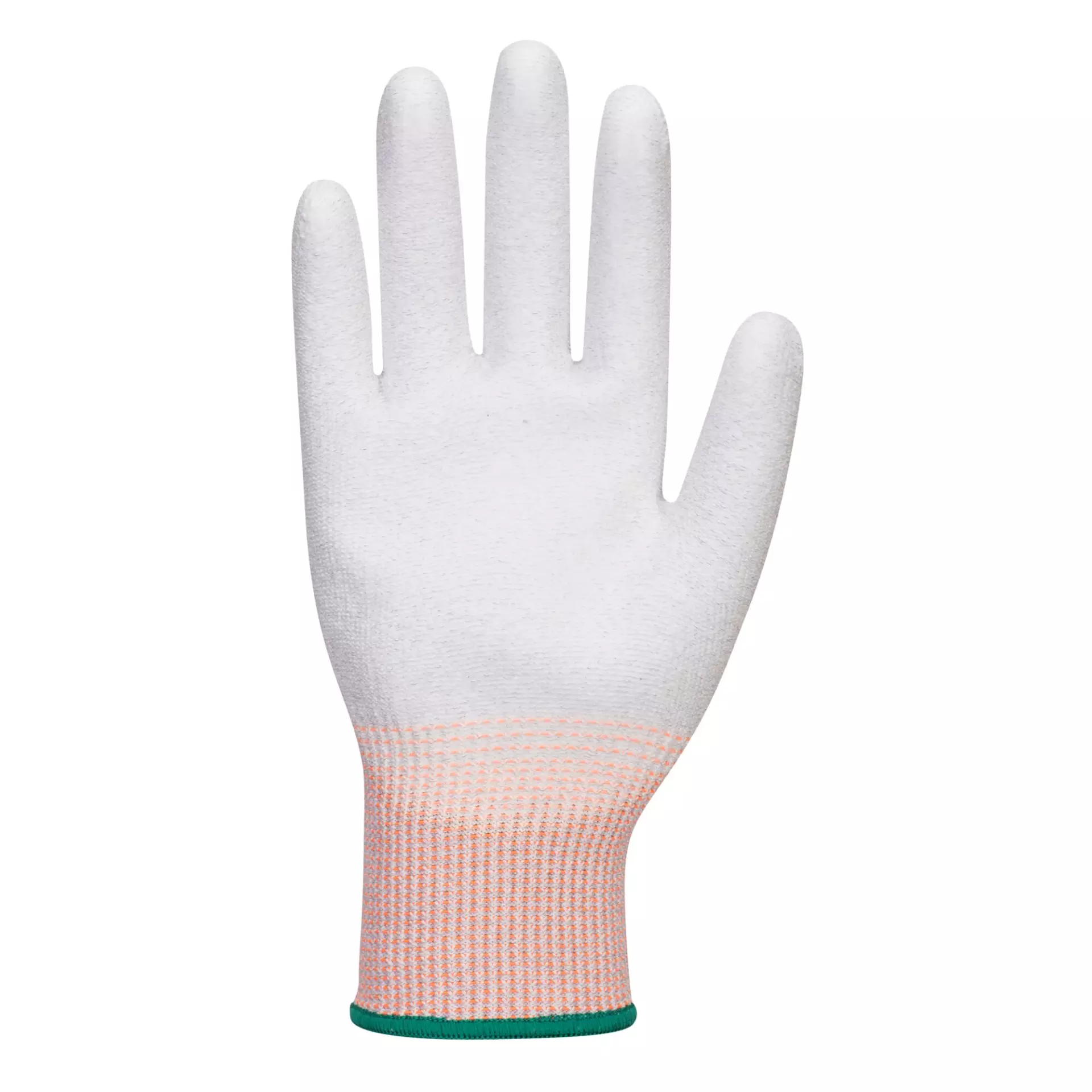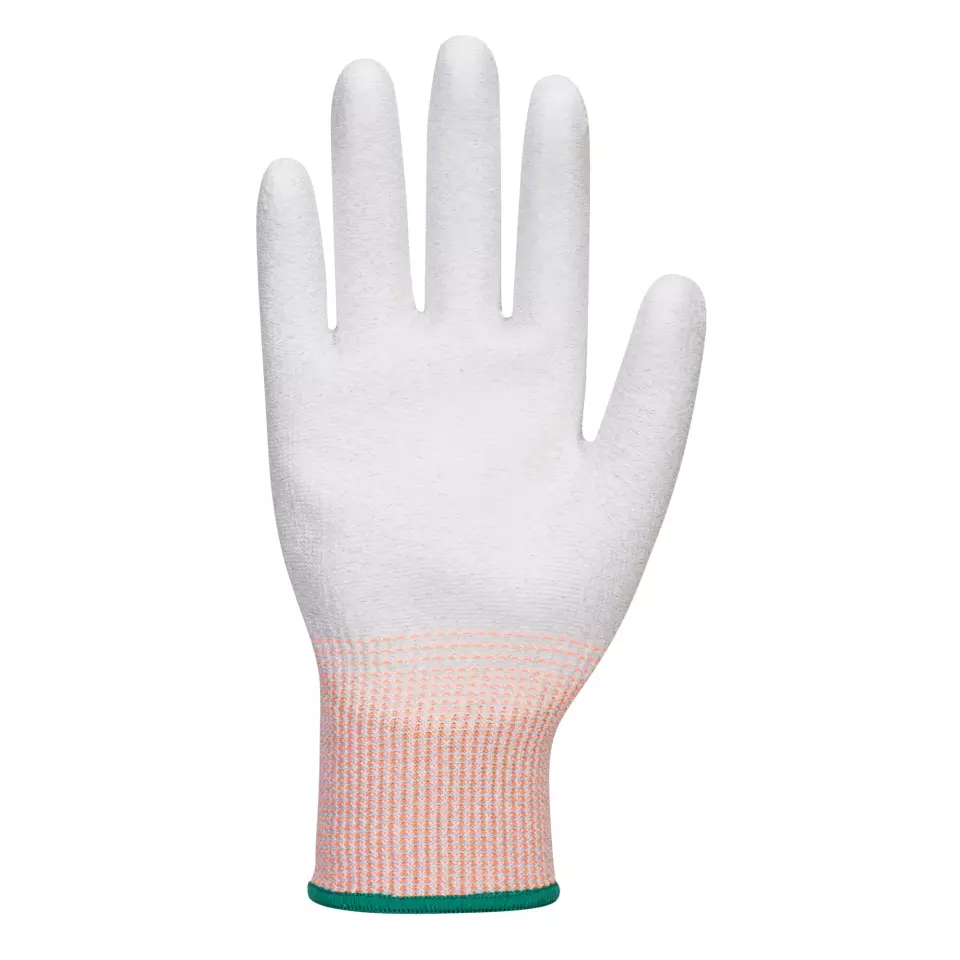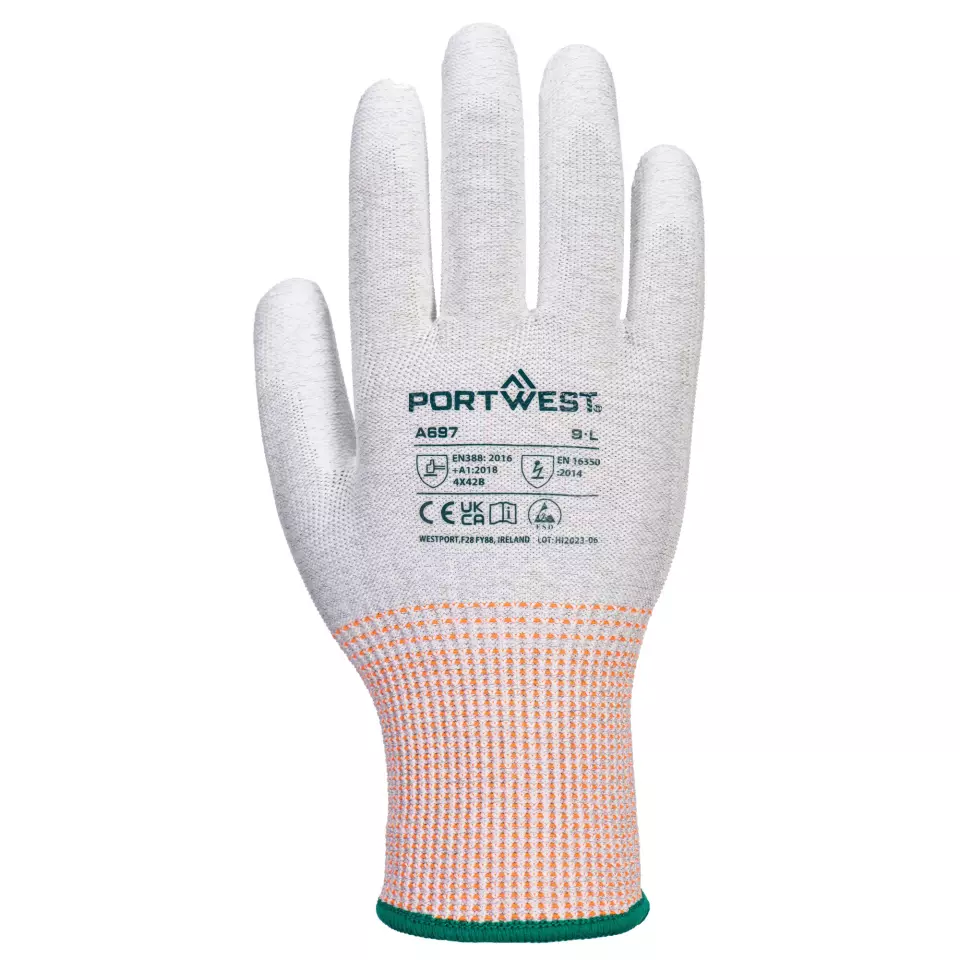

Features You'll Love

Palm Material · Polyurethane (PU)
The material used on the palm side of the glove, affecting grip, durability, protection level, and comfort during use.

EN 388 · Tear Resistance Level 4, Puncture Resistance Level 2, Cut Resistance, ISO 13997 Level B, Abrasion Resistance Level 4
EN 61340-5-1 · Electrostatic Discharge Antistatic
Offers the highest level of protection against tearing, withstanding a strong force before ripping.
Withstands moderate force from sharp objects like heavy-duty splinters or wires.
Offers low cut protection for general work, such as packaging and light assembly.
Offers the highest level of protection against intense rubbing and wear from rough materials.
Guards the product’s sensitive electronics against damage from static electricity. This protection during manufacturing and handling prevents hidden component failure, ensuring your device works reliably and has a longer operational life.
Portwest
LR13 ESD PU Palm Glove, Grey/White, 12 pairs
LR13 ESD PU Palm Glove, Grey/White, 12 pairs
4.8 / 5
44,80 €
Price per 12 pairs
3,73 € / pair
Choose size
Shipping fee is 7,95 € for orders under 80,00 €
Features You'll Love

Palm Material · Polyurethane (PU)
The material used on the palm side of the glove, affecting grip, durability, protection level, and comfort during use.

EN 388 · Tear Resistance Level 4, Puncture Resistance Level 2, Cut Resistance, ISO 13997 Level B, Abrasion Resistance Level 4
EN 61340-5-1 · Electrostatic Discharge Antistatic
Offers the highest level of protection against tearing, withstanding a strong force before ripping.
Withstands moderate force from sharp objects like heavy-duty splinters or wires.
Offers low cut protection for general work, such as packaging and light assembly.
Offers the highest level of protection against intense rubbing and wear from rough materials.
Guards the product’s sensitive electronics against damage from static electricity. This protection during manufacturing and handling prevents hidden component failure, ensuring your device works reliably and has a longer operational life.
Product description
Level B cut resistant glove engineered for protection against cuts and sharp objects in ESD-sensitive environments. Features a 13-gauge polyester and carbon fiber shell that diverts static electricity, combined with PU palm coating for enhanced grip and dexterity. The seamless construction and palm-dipped design provide excellent breathability and precision handling, making it suitable for touchscreen device operation.
Product Features:
- Level B cut resistance for protection against cuts and sharp objects
- Anti-static properties suitable for ESD environments
- Palm dipped design to increase dexterity and ventilation
- Breathable seamless liner construction
- Compatible with most mobile touchscreen devices
Technical Details:
- Material composition: 13-gauge polyester and carbon fiber shell
- PU palm coating for grip and dexterity
- Seamless 13-gauge liner
- Dexterity rating: Level 5
Recommended Applications:
- Automotive industry
- Electronics assembly
- Testing applications
- Precision work
Standards:
- CE certified
- UKCA marked
- EN ISO 21420:2020 Dexterity 5
- EN 388:2016 + A1:2018 (4X42B)
- EN 16350:2014 Pass Level R < 1.0 x 108 Ω
- IEC 61340-5-1:2016